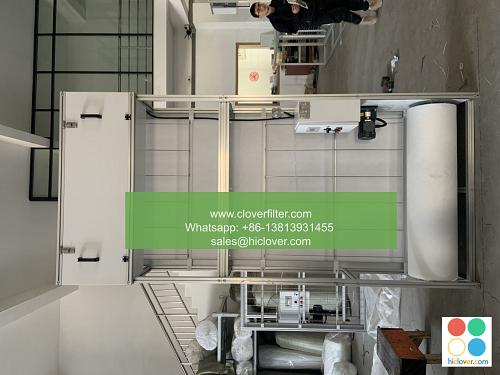The Relationship Between Air Filtration and Static Control in Electronics Manufacturing: Insights from Mexicali Plants

The electronics manufacturing industry is a complex and highly specialized field that requires careful attention to detail and a deep understanding of the various factors that can impact product quality and reliability. Two critical aspects of electronics manufacturing are air filtration and static control, which play a crucial role in preventing contamination and damage to sensitive electronic components. In this article, we will explore the relationship between air filtration and static control in electronics manufacturing, with a focus on insights from Mexicali plants, and highlighting various application areas where these concepts are particularly relevant.
Air Filtration in Electronics Manufacturing
Air filtration is a critical component of electronics manufacturing, as it helps to remove airborne contaminants such as dust, dirt, and other particles that can damage sensitive electronic components. The use of high-efficiency particulate air (HEPA) filters and ultra-low penetration air (ULPA) filters is common in electronics manufacturing facilities, as these types of filters are capable of capturing extremely small particles and preventing them from entering the manufacturing environment. In addition to removing airborne contaminants, air filtration systems also help to control the temperature and humidity levels in the manufacturing environment, which is essential for preventing damage to electronic components.
Static Control in Electronics Manufacturing
Static control is another critical aspect of electronics manufacturing, as it helps to prevent damage to sensitive electronic components from electrostatic discharge (ESD). ESD can occur when two objects with different electrical charges come into contact with each other, resulting in a sudden and potentially damaging transfer of electricity. To prevent ESD, electronics manufacturing facilities use a variety of static control measures, including anti-static flooring, static-dissipative workstations, and personal grounding systems. These measures help to ensure that all objects and personnel in the manufacturing environment are at the same electrical potential, preventing the buildup of static electricity and the resulting risk of ESD.
The Relationship Between Air Filtration and Static Control
While air filtration and static control are two distinct aspects of electronics manufacturing, they are closely related and interconnected. For example, the use of air filtration systems can help to reduce the amount of airborne contaminants in the manufacturing environment, which can in turn reduce the risk of ESD. This is because many airborne contaminants, such as dust and dirt, can become electrified and contribute to the buildup of static electricity. By removing these contaminants from the air, air filtration systems can help to prevent the buildup of static electricity and reduce the risk of ESD.
Insights from Mexicali Plants
Mexicali, a city located in the state of Baja California, Mexico, is home to a large number of electronics manufacturing facilities, including plants operated by major companies such as Foxconn, Flex, and Jabil. These facilities produce a wide range of electronic products, including printed circuit boards (PCBs), wireless communication devices, and computer hardware. In terms of air filtration and static control, Mexicali plants have implemented a variety of measures to prevent contamination and damage to sensitive electronic components. These measures include the use of HEPA filters, ULPA filters, and static control systems, as well as the implementation of strict cleaning protocols and quality control procedures.
Application Areas
The relationship between air filtration and static control is relevant to a wide range of application areas in electronics manufacturing, including:
* Printed circuit board (PCB) assembly: Air filtration and static control are critical in PCB assembly, as the components used in this process are highly sensitive to contamination and ESD.
* Wireless communication device manufacturing: The manufacture of wireless communication devices, such as cell phones and tablets, requires careful attention to air filtration and static control, as these devices are highly sensitive to contamination and ESD.
* Computer hardware manufacturing: The manufacture of computer hardware, including components such as central processing units (CPUs) and memory modules, requires careful attention to air filtration and static control, as these components are highly sensitive to contamination and ESD.
* Aerospace and defense electronics: The manufacture of aerospace and defense electronics requires extremely high levels of cleanliness and static control, as the components used in these applications are highly sensitive to contamination and ESD.
In conclusion, the relationship between air filtration and static control is a critical aspect of electronics manufacturing, and is particularly relevant to a wide range of application areas, including PCB assembly, wireless communication device manufacturing, computer hardware manufacturing, and aerospace and defense electronics. By understanding the interconnectedness of these two concepts, electronics manufacturers can take steps to prevent contamination and damage to sensitive electronic components, and ensure the production of high-quality products.

